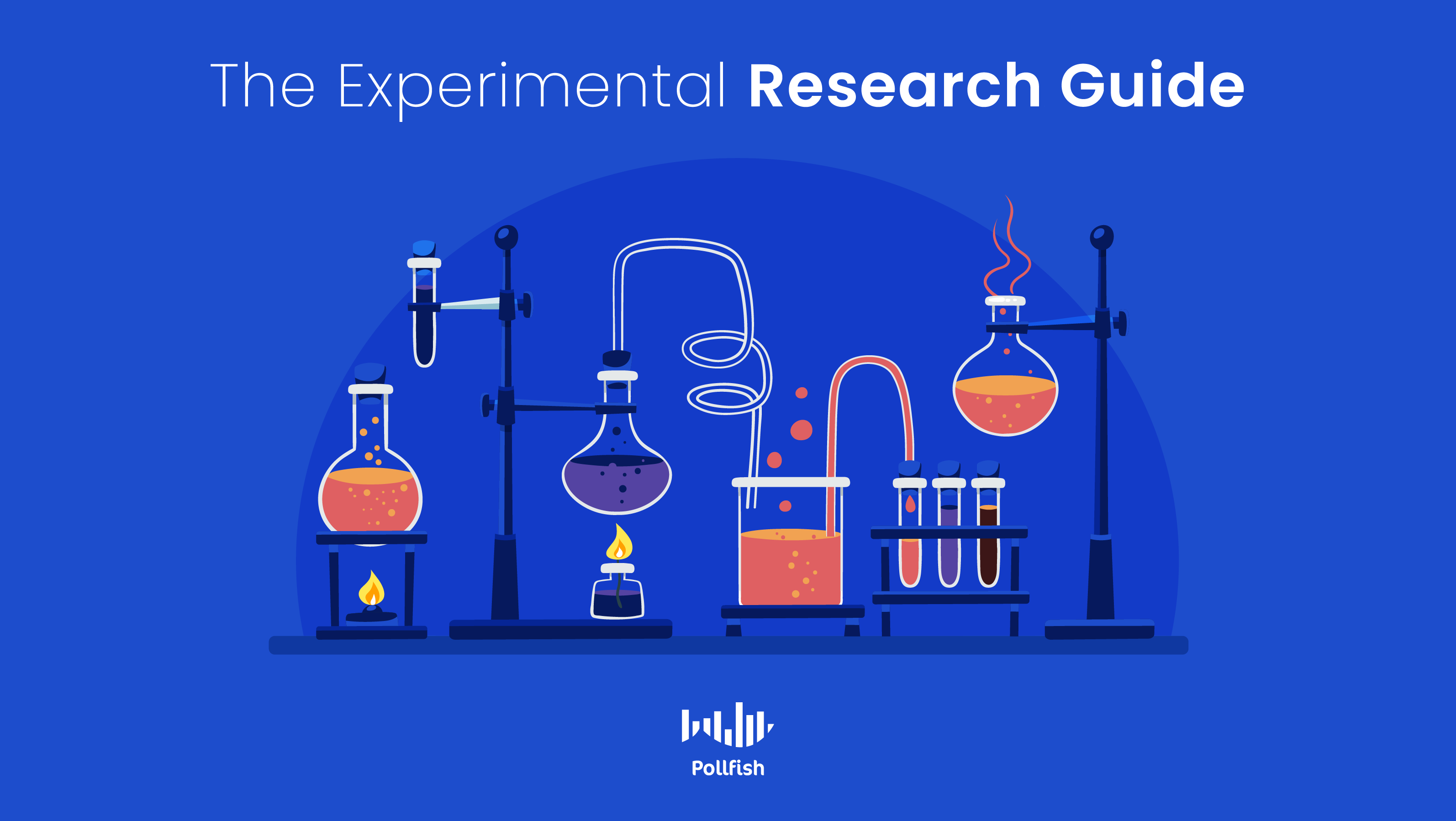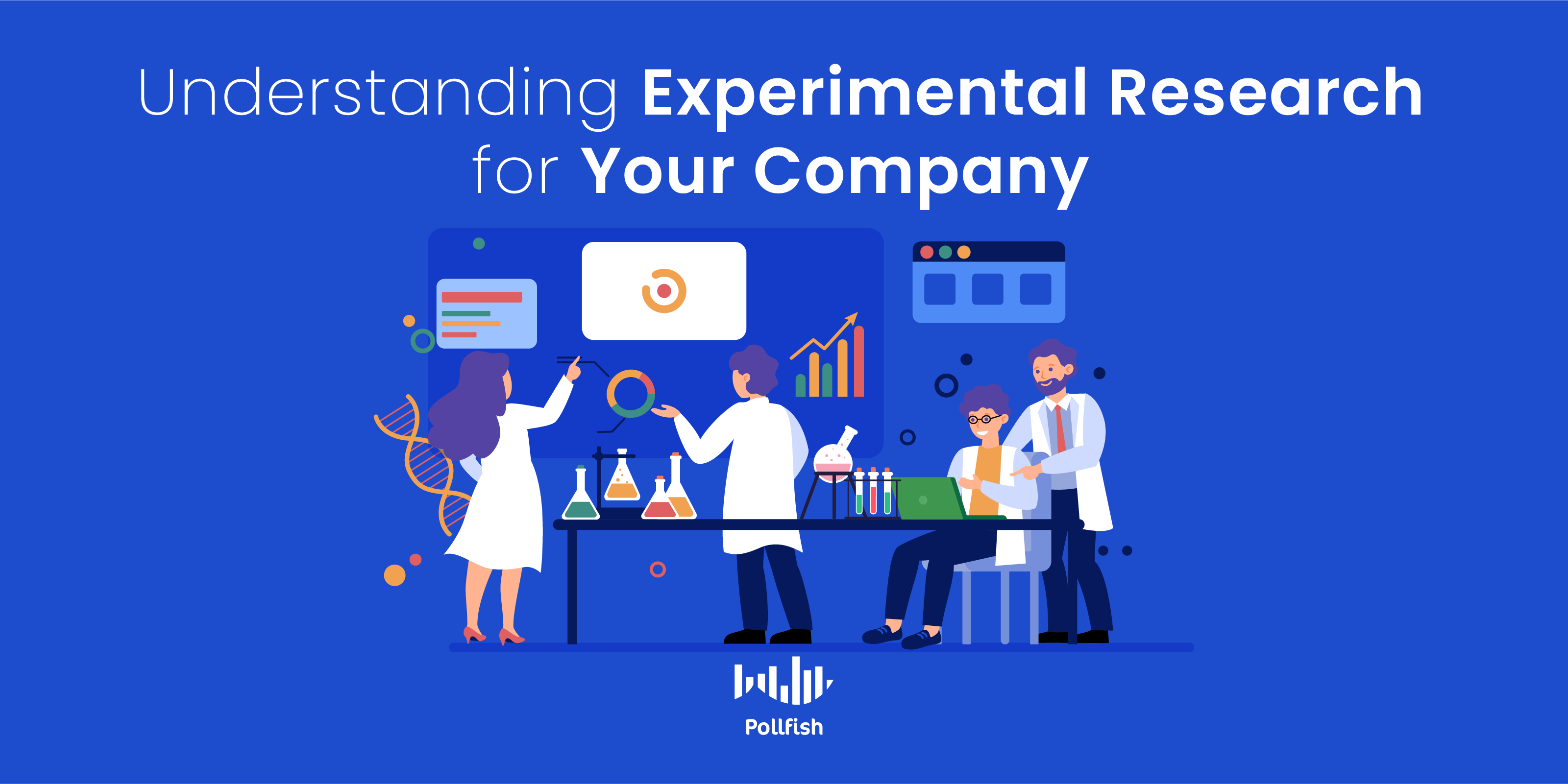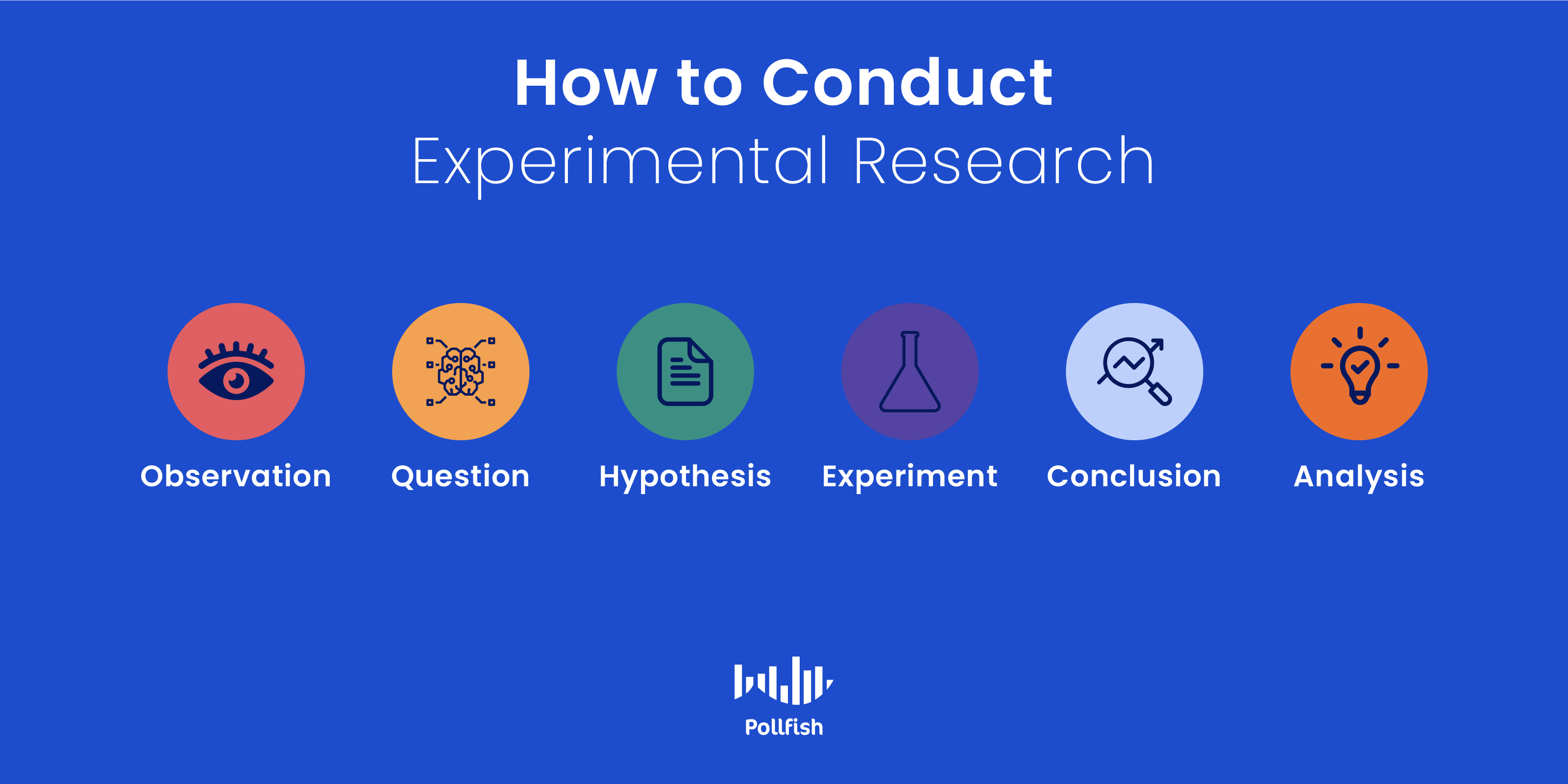What is Experimental Research & How is it Significant for Your Business

Experimental research uses a scientific method for conducting research, employing the most methodical research design. Known as the gold standard, it involves performing experiments to reach conclusions and can be conducted based on some of the findings from previous forms of research.
Logically, it would follow correlational research, which studies the relationships between variables. It can also follow causal research, a kind of experimental research in itself, as it establishes cause and effect relationships between previously studied variables.
Experimental research is typically used in psychology, physical and social sciences, along with education. However, it too can be applied to business.
This article expounds on experimental research, how it is conducted, how it differs from other forms of research, its key aspects and how survey studies can complement it.
Defining Experimental Research
Experimental research is a kind of study that rigidly follows a scientific research design. It involves testing or attempting to prove a hypothesis by way of experimentation. As such, it uses one or more independent variables, manipulating them and then using them on one or more dependent variables.
In this process, the researchers can measure the effect of the independent variable(s) on the dependent variable(s). This kind of study is performed over some time, so that researchers can form a corroborated conclusion about the two variables.
The experimental research design must be carried out in a controlled environment.
Throughout the experiment, the researcher collects data that can support or refute a hypothesis, thus, this research is also referred to as hypothesis testing or a deductive research method.
The Key Aspects of Experimental Research
There are various attributes that are formative of and unique to experimental research in addition to its main purpose. Understanding these is key to understanding this kind of research in-depth and what to expect when performing it.
The following enumerates the defining characteristics of this kind of research:
- It includes a hypothesis, a variable that will be manipulated by the researcher along with the variable that will be measured and compared.
- The data in this research must be able to be quantified.
- The observation of the subjects, however, must be executed qualitatively.
- It can be conducted in a laboratory in field settings, i.e., field research.
- The latter is rarer, as it is difficult to manipulate treatments and to control external occurrences in a live setting.
- It relies on making comparisons between two or more groups (the variables).
- Some variables are given an experimental stimulus called a treatment; this is the treatment group.
- The variables that do not receive a stimulus are known as the control group.
- First, researchers must consider how the variables are related and only afterward can they move on to making predictions that can be tested.
- Time is a crucial component when putting forth a cause-and-effect relationship.
- There 3 types of experimental research:
- Pre-experimental research design
- True experimental research design
- Quasi-experimental research design
The Three Types of Experimental Research
Experimental research encompasses three subtypes that researchers can implement. They all fall under experimental research, differing in how the subjects are classified. They can be classified based on their conditions or groups.
Pre-experimental research design:
This entails a group or several groups to be observed after factors of cause and effect are implemented.
- Researchers implement this research design when they need to learn whether further investigation is required for these particular groups.
- Pre-experimental research has its own three subtypes:
- One-shot Case Study Research Design
- One-group Pretest-posttest Research Design
- Static-group Comparison
Quasi-experimental Research Design
Representing half or pseudo, the moniker “quasi” is used to allude to resembling true experimental research, but not entirely.
- The participants are not randomly assigned, rather they are used when randomization is impossible or impractical.
- Quasi-experimental research is typically used in the education field.
- Examples include: the time series, no equivalent control group design, and the counterbalanced design.
True Experimental Research Design
This kind of experimental research design studies statistical analysis to confirm or debunk a hypothesis.
- It is regarded as the most accurate form of research.
- True experimental research can produce a cause-effect relationship within a group.
- This experiment requires the fulfillment of 3 components:
- A control group (unaltered) and an experimental group (to undergo changes in variables)
- Random distribution
- Variables can be manipulated
Why Your Business Needs Experimental Research

There are various benefits to conducting experimental research for businesses. Firstly, this form of research can help businesses test a new strategy before fully engaging in/ launching it.
The strategy can involve anything from content marketing strategy, to a new product launch. This is especially useful for technology companies, which conduct experimentation frequently. In fact, this kind of research is essential to an R & D (research and development) department.
This makes experimental research a much-needed effort when it comes to spurring innovation. Whether it involves a slight rebranding or an upgrade of products, experimental research guides these campaigns in a science-backed manner.
Secondly, a business must excel in meeting customer needs. Customer experience is an overwhelmingly important side of any business, as customers are willing to make on-the-stop purchases and pay more for a good CX.
As such, each product addition and change in a customer journey must be carried out wisely. Businesses ought to avoid creating unwanted services, or those that cause any aversion within customers. Instead, they should only invest in the most profitable services, products and experiences, a feat that cannot be accomplished solely on guesswork.
Experimenting allows brands to understand customer preferences and changes in their behaviors, as the experiments create stimuli and changes in independent variables.
Additionally, experimental research grants companions an understanding of their business environment. In turn, this helps them predict outcomes, or create hypotheses about outcomes to guide them in further research, if need be. For example, a business may consider testing the reactions of its competitors should it raise its costs on various offers.
Aside from discovering if this yields a profitable change, it can discover how companies in the same niche respond and if those responses drive more sales, etc.
Key Independent Variables
- Prices
- Digital user experience (DX) such as new site features
- Advertisements
- Marketing activity (SEO, SEM, social media announcements, retargeting, etc.)
- Season
- Inventory (new products or upgrades)
- Interactions with sales agents
Key Dependent variables
- Sales
- Demand
- VoC feedback (whether positive or negative)
- Site traffic
- In-store visits
- Revenue
- Time spent on a website, bounce rates, etc.
An Example of Experimental Research for Business
Market researchers can apply experimental research to a wide breadth of testing needs. Virtually anything that requires proof, confirmation, or is clouded by uncertainty can put experimentation into practice.
The following is an example of how a business can use this research:
A product manager needs to convince the higher-ups in a denim company to launch a new product line at a particular department store. The objective of this launch is to increase sales, expand the company’s floor presence and widen the offerings.
The manager has to prove that this line is needed in order for the company to pitch the idea to the department store. The product manager can then conduct experimental research to provide a strong case for their theory, that a new line can raise sales.
The product manager performs experimental research by executing a test in a few stores, in which the new line of denim is sold. These stores are varied in location to signify the target market sales before and after the launch. The test runs for a month to determine if the hypothesis (the new line resulting in increased attention and sales) can be proven.
This represents a field experiment. The product manager must heed the sales and foot traffic of the new product line, paying attention to spikes in revenue and overall sales to justify the new line.
Experimental Research Survey Examples
Survey research runs contrary to experimental research, unlike the other main forms of research such as exploratory, descriptive and correlational research. This is because the nature of surveys is observational, while experimental research, as its name signifies, relies on experimentations, that is testing out changes and studying the reactions to the changes.
Despite the contrast of survey research to experimental research, they are not completely at odds. In fact, surveys are a potent method to gain further insight into an existing experiment or understand variables before conducting an experiment in the first place.
As such, businesses can adopt a wide variety of surveys (using market research) to complement their experimental research. Here are some of the key forms of surveys that work in tandem with experimentation:
- The quantitative survey
- Discovers the aspects of statistical significance within variables.
- Helpful in that causal research is quantitative in essence.
- The retrospective survey
- Delves into past events, occurrences and attitudes in regards to the variables.
- Shows whether the variables changed and how so.
- The prospective survey
- Can find causative elements between variables over a period of time.
- Useful for formulating hypotheses.
- The customer experience survey
- Helps businesses zero in on variables that contribute to or result from certain kinds of customer experiences.
- Allows businesses to test CX in relation to the responses from this survey.
- The pulse survey
- Measures various matters critical in a business or organization; surveys employees.
- Deployed more frequently, so variables can always be continually tracked.
- The qualitative survey
- Helps answer the what, why and how with open-ended questions.
- Extracts key high-level information in depth.
How Experimental Research Differs from Correlational, Exploratory, Descriptive and Causal Research
Experimental research differs from exploratory, descriptive and correlational research in self-evident ways. It is, however, often conflated with causal research. However, they too have notable differences.
Causal research involves finding the cause-and-effect relationships between variables. Thus, it too employs experimentation. However, this means that causal research is a form of experimental research, not the other way around.
Experimental research, on the other hand, is fully science and experiment-based, as it chiefly seeks to prove or disprove a hypothesis. While this largely involves studying independent and dependent variables, as it does in causal research, it is not solely based on these aspects. Instead, it can introduce a new variable without knowing the dependent variable or experiment on an entirely new idea (as in the example used in the previous selection).
Causal research looks into the comparison of variable relationships to find a cause and effect, while experimental research states an expected relationship between variables and is bent on testing a hypothesis.
As far as comparisons to correlational research go, while experimental research also studies the relationships between variables, it functions far beyond this by manipulating the variables and virtually all subjects involved in experiments.
On the contrary, correlational research does not apply any alterations or conditioning to variables. Instead, it is a purely observational research method. As such, it merely detects whether there is a correlation between only 2 variables. In contrast, experimental research studies and experiments with several at a time.
Exploratory research is vastly different from experimental research, as it forms the very foundation of a research problem and establishes a hypothesis for further research. As such, it is conducted as the very first kind of research around a new topic and does not fixate on variables.
Descriptive research, like exploratory research and unlike experimental research, is conducted early in the full research process, following exploratory research. Like exploratory research, it seeks to paint a picture of a problem or phenomenon, as it zeros in an already-established issue and delves further, in pursuit of all the details and conditions surrounding it.
Thus, unlike experimental research, it only observes; it does not manipulate variables in any capacity or setting.
The Advantages and Disadvantages of Experimental Research
Experimental research offers several benefits for researchers and businesses. However, as with all other research methods, it too carries a few disadvantages that researchers should be aware of.
The Advantages
- Researchers have a full level of control in an experiment.
- It can be used in a wide variety of fields and verticals.
- The results are specific and conclusive.
- The results allow researchers to apply their findings to similar phenomena or contexts.
- It can determine the validity of a hypothesis, or disprove one.
- Researchers can manipulate variables and use them in as many variations as they desire without tarnishing the validity of the research.
- It discovers the cause and effect among variables.
- Researchers can further analyze relationships through testing.
- It helps researchers understand a specific environment fully.
- The studies can be replicated so that the researchers can repeat their experiments to test other variables or confirm the results again.
The Disadvantages
- It involves a lot of resources, time and money, as such, it is not easy to conduct.
- It can form artificial environments when researchers unwittingly over-manipulate variables as a means of duplicating real-world instances.
- It is vulnerable to flaws in the methodology, along with other mistakes that can’t always be predicted.
- Flawed experiments may require researchers to start their experiments anew to avoid false calculations, measuring results from artificial scenarios or other mistakes.
- Some variables cannot be manipulated and some forms of research experiments are too impractical to conduct.
How to Conduct Experimental Research

Experimental research is often the final form of research conducted in the research process and is considered conclusive research. The following explains the general steps required to successfully complete experimental research.
- Identify your research subject, a question surrounding it and its variables.
- Form a specific research question.
- Gather all available literature and other resources around the subject.
- Conduct secondary research around the subject and primary research via surveys.
- If the topic involves a research process you have already begun, for instance in exploratory, descriptive, correlational or causal research type, gather together the facts you already have and hand.
- Consider how they relate to your question and how they line up with the secondary research you conducted.
- After your initial studies, form a hypothesis.
- Design a controlled experiment.
- First, decide which variable(s) is dependent/ independent (if it doesn’t involve experimenting).
- Decide how far to vary the independent variable.
- In the experiment, manipulate the independent variable(s).
- Measure the dependent variable(s) while you study the independent variable(s) alongside.
- Make sure to control potential confounding variables.
- Assign subjects to their designated experimental treatment groups.
- Keep the study size in mind; a larger study pool creates statistical findings.
- Assign your subjects to “treatment” groups randomly, with each to receive a different level of “treatment.”
- Use a control group, which receives no manipulation. This shows you the test subjects as they appear/behave without any experimental intervention.
- There are 2 types of groups for assigning your subjects:
- A completely randomized design vs a randomized block design.
- Completely randomized design: every subject gets randomly assigned to a treatment.
- Randomized block design: aka stratified random design, subjects get first grouped based on a shared characteristic, then assigned to treatments within their groups at random.
- An independent measures design vs a repeated measures design.
- Independent measure: subjects receive only one of the possible levels of an experimental treatment.
- Repeated measures design: every subject gets each of the experimental treatments consecutively, as their responses are measured. It also refers to measuring the effect of an emerging effect over time.
- A completely randomized design vs a randomized block design.
- Continue experimenting on variables as needed, take measurements and take notes.
- Based on your experiment(s), put together a logical conclusion. It is possible that it may need testing over time.
- Identify your research subject, a question surrounding it and its variables.
Using Experimental Research and Going Further
Although experimental research can be very complex, this research method is the most conclusive. Using a scientific approach, it can help you form tests on various business matters. While it is critical for understanding your target market’s and customers’ existing behaviors, it can also be used to experiment on a wide variety of other matters.
Before launching a new product, or an updated one, for example, you can conduct an experiment to understand the product in action. This helps you avoid any glitches or undesirable qualities that will incur problems for your customs and a bad reputation for your brand.
Experimental research is not for every business, yet if you decide to implement this form of research, consider using surveys in tandem. An online survey platform can help you establish and distribute your surveys to a wide network via organic sampling to avoid biases.
Although it isn’t a requirement, in today’s age of excelling in customer experience (CX), it is of the essence to have as much data on your target market as possible. The best survey tools for market research make this possible and they can help you quickly get high quality survey responses.
Pollfish Marketing Team
Ready to Try Pollfish?
Create your survey with AI, target high-quality respondents starting at $0.95 per complete, and start getting results in just minutes in real-time. From running a simple product concept survey to managing a constant stream of trackers for dozens of clients in dozens of countries, we’ve got you.
